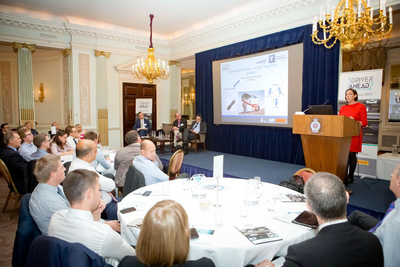Driverless Cars Bring Up More Questions Than Answers And Training Will Be Crucial, Finds 'Driver Ahead?' Conference
READ ALSO: Autonomous Driving May Kill The Automobile Industry And Our Freedom Of Mobility
LONDON - October 12, 2017: Driverless cars could create a highway to confusion unless training and coaching catches up with the fast pace of change and helps drivers cope with a whole new set of demands.
That is the overall conclusion reached by a collection of industry experts who converged on London for the IAM RoadSmart/RAC Foundation/Pirelli ‘Driver Ahead?’ Conference last week.
More than 100 experts in the industry and beyond it talked about their findings and research for the conference, which sought to “map a safe route to the driverless car.”
During the Conference, speakers discussed how the next generation of autonomous cars will record much more information than ever before. This data can be used to resolve any post-crash insurance claims but also, critically, to inform and personalise future driver training.
Opening the conference, guest speaker Victoria Coren-Mitchell entertained delegates with a thought provoking speech. She introduced the concept of “death by code,” challenging us to decide if deaths caused by a computer are better or worse than those caused by human error. She pointed out that: “‘What would I do in a driverless car?’ The answer is ‘Scream!’ What is driving this thing?”
Simon Thompson, Human Factors Specialist at Jaguar Land Rover, said: “Without the driving, there will be the desire to do secondary tasks – but how does the car engage with the driver when it needs him or her? There is a lot more that needs to be done in designing cars so that controls are easier to find, when asking the driver to take over control again.”
Other experts added that some drivers would inevitably misuse the vehicle systems, or simply find a way round them because they find it too complicated.
Professor Nick Reed, head of mobility research at Bosch, said: “Any system needs to be aware of the effective use or misuse of it.”
Professor of Human Factors at University of Nottingham Sarah Sharples, added: “People will break unbreakable technology if they find it inconvenient. What’s more, people pranking and having fun will cause security risks.”
Professor Neville Stanton, Professor and Chair of Human Factors Engineering at Southampton University pointed out there is a danger of switching the driver from underload to overload – where he or she has nothing to do, then has a sudden requirement to intervene in an emergency situation, and ends up panicking and creating a tragedy.
He said: “The problem with automation is that it is not currently powerful to render the driver completely redundant. It requires the driver to monitor continuously and intervene occasionally. The car needs to support, not replace the driver.”
Nic Fasci, lead engineer for vehicle engineering and homologation at Tata Motors European Technical centre, said: “The key to autonomous vehicles is training, training, training! The skill of driving must be robotic before the software can be developed. The skill of driving is being eroded and this can be seen every day.”
Neil Greig, director of policy and research at IAM RoadSmart, concluded: “Having the views of so many experts in the industry for our conference was very valuable. It showed that the driver will require a great deal of re-educating before entering the world of the autonomous vehicle.
“There is a myth that the car will do everything for the driver. It is clear the driver will always have a part to play – but is the driver ready for his new role? Clearly not. That’s the reality we have to prepare for.”



